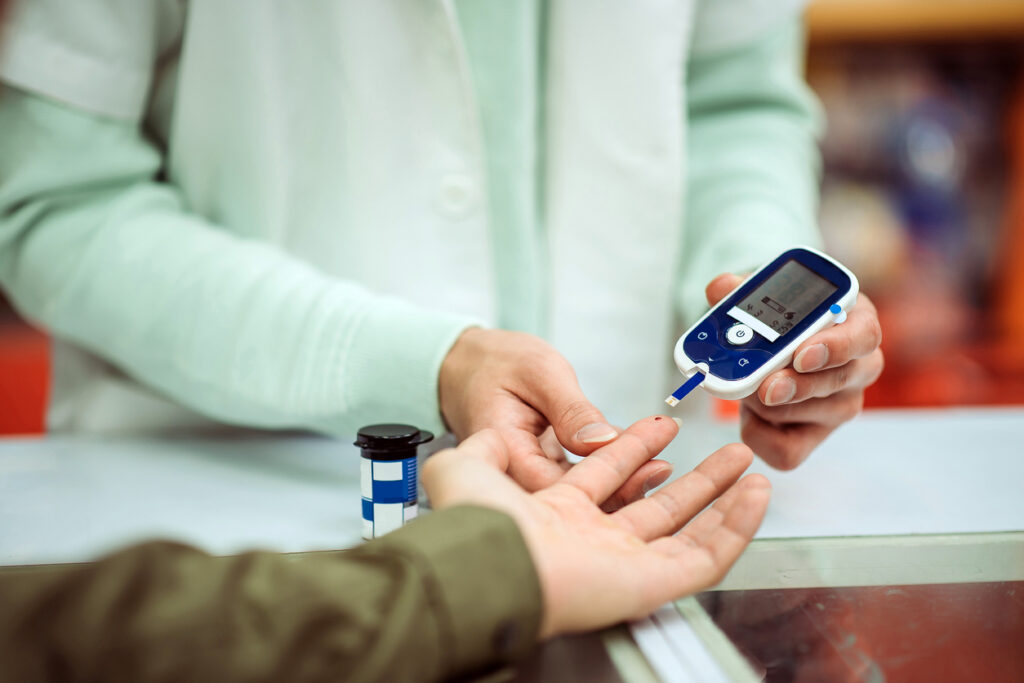Vagus Nerve Stimulation
Vagus nerve stimulation (VNS) is a long term, intermittent stimulation of the left vagus nerve (a major nerve originating from the brain) by a device. The device is commercially available from NeuroCybernetic Prosthesis (NCP). It is a watch-sized equipment that generates electric signals. It is implanted into the chest wall on the left side (like the pacemaker of the heart). Current is intermittently delivered through a lead wire from the equipment to stimulate the left vagus nerve. Vagus nerve stimulation has been used for the treatment of severe epilepsy for many years and it has been shown to be useful. However this has extended to the treatment of depression not responding to medications. The first implant was done in July 1998 at the Medical University of South Carolina in Charleston. Since then many patients have undergone such treatment for resistant depression.
The vagus nerve was chosen because it is a nerve originating from the brain that extends all the way down to the tummy. It carries electrical signals from internal organs to the brain. This information is transmitted to different parts of the brain, and has impact on the activity of the part of brain that controls emotion. The stimulation can be programmed by computer and can also be controlled manually by the patient.
Procedure
Patients must be selected by the psychiatrist. Upon referral, the patient will undergo a complete medical and psychiatric assessment. The mood and general health will be measured using rating scales. After that the patient will need to go to the hospital for implantation of the stimulator. This is performed as a day procedure. However depending on the patient’s condition sometimes overnight stay may be needed. The implantation is done under general anaesthesia (ie the patient will be asleep through the procedure) by an experienced surgeon (such as a neurosurgeon). After the procedure, the patient can go home or if necessary, stay in the hospital overnight. After implantation the patient needs to see the doctor as follow-up. The frequency is determined by the doctor. Follow-up is important for the programming of the device and psychiatric assessment of the patient.
Complications
Like any surgical procedures, implantation of VNS device has its risks. Complications in regard to surgical procedure include:
- Reaction to general anaesthesia
- Bleeding
- Infection at the site of implantation
- Skin related: skin irritation, pain, scarring
Other risks regarding the stimulation of vagus nerve itself include:
- Lung related: asthma, infection of the windpipes or lungs
- Heart related: heart rate slowing down
- Nerve related: dizziness, headache, facial weakness, fitting, sleep disturbances, muscle twitching during stimulation.
Also depression related complications can occur:
- Change in appetite/weight
- Difficulties in concentration
- Excessive guilt
- Helplessness/hopelessness/worthlessness
- Tiredness
- Paranoid symptoms
- Obsessive and compulsive symptoms
All the above complications not only happen in this procedure, but in other minor surgical procedures or depressive patients as well. Therefore many of such complications may not be a direct effect of VNS device implantation.
Benefits
There have been studies showing that VNS helps in treatment-resistant depression. The results were successful enough for this to be done.
Risks
Other than the risks mentioned above, patients who wish to have this therapy will have to pay for the device to be implanted. However a discount from the company is available.
References
- George MS, Sackeim HA, Marangell LB, et al. Vagus nerve stimulation. A potential therapy for resistant depression? Psychiatr Clin North Am. 2000;23(4):757-783.
- Rush AJ, George MS, Sackheim HA, et al. Vagus nerve stimulation for treatment resistant depression: A multicenter study. Biol Psychiatry. 2000;47(4):276-286.
- University of New South Wales: Vagus nerve stimulation for the treatment of resistant depression: an open study: Patient Information Statement. 2005. [Cited 2005 October 1st].
- Up to Date: Overview of the management of epilepsy in adults [online]. 2005. [Cited 2005 October 1st]. Available from: URL: http://www.utdol.com/application/topic.asp?file=epilepsy/4878&type=A&selectedTitle=1~3
All content and media on the HealthEngine Blog is created and published online for informational purposes only. It is not intended to be a substitute for professional medical advice and should not be relied on as health or personal advice. Always seek the guidance of your doctor or other qualified health professional with any questions you may have regarding your health or a medical condition. Never disregard the advice of a medical professional, or delay in seeking it because of something you have read on this Website. If you think you may have a medical emergency, call your doctor, go to the nearest hospital emergency department, or call the emergency services immediately.







